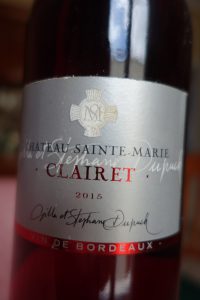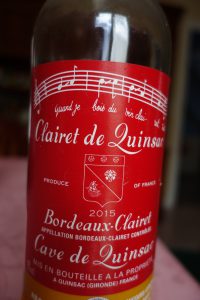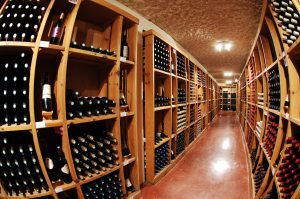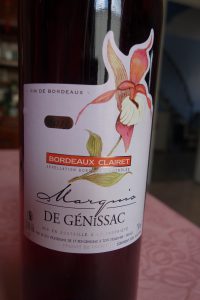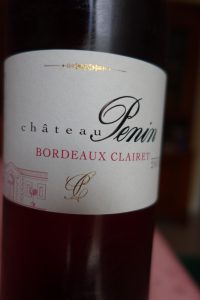I love light, fruity, colorful rosé wine and drink buckets-full of the stuff in summer.
Yes, my conservative side comes through: to me, rosé means hot weather. Oh, I’ve had rosé in winter, and it looks really pretty alongside, let’s say, a dish of salmon where the colors match.
But that is the exception… Rosé just seems to match the insouciance of summer and, as we all know, it goes with just about any food a dry white or red wine does. Cool and refreshing, it is multi-purpose, easy-going, crowd-pleasing, inexpensive, and the polar opposite of snobbish.
I’m particular about my rosé. For a start, I have a problem with really pale ones with orange tinges – except for Champagne. It’s purely psychological: when I see a Rosé de Provence, it looks like, well, a pale imitation of what rosé should be. I expect such wines to be rather neutral and weak in flavor. In fact, I have the same problem with Burgundy: I have a prejudice against wines that are pale when, in fact, some of them can be simply wonderful on the palate…
Clairet de Bordeaux is halfway to being a red wine. The colour is very deep pink or an intense light red, with purple nuances. It really stands out – sometimes to the point where you almost expect it to glow in the dark! Other regions such as Navarra and Rioja in Spain produce such wine (clarete), but they still represent only a small fraction of the world’s rosé.
Is Clairet rosé? The short answer is yes… The only difference is the length of time the wine spends on the skins. However, there is a separate appellation for Bordeaux Clairet as opposed to Bordeaux Rosé. What is the difference? In a word, color. Bordeaux Rosé must have an index less than 1.1 ICM*, whereas Clairet must be between 1.1 and 2.5 ICM.
The word clair in French means “pale”, and the English word claret comes from clairet. The origin of this word goes back to the Middle Ages, when all of Aquitaine was English. At that time, entire fleets of ships sailed up the Garonne to load the new vintage of Bordeaux and take it to English ports. This wine was not as we know it today. It was lighter in colour and meant to be drunk young: the ancestor of present-day Clairet.
Clairet can be made from any of the Bordeaux red wine grape varieties. Ones produced primarily from Cabernet have a little more structure and a little more ageing potential than Merlot-based ones. Be this as it may, Clairet it best consumed within a year or two of the vintage.
- Planète Bordeaux
- Cellar of Planète Bordeaux
I went to see M. Frédéric Roger at Planète Bordeaux, home of the Syndicat des Bordeaux and Bordeaux Supérieur, to find out more about Clairet. Planète Bordeaux is located in Beychac-et-Caillau on the road to Libourne. I can’t recommend their boutique highly enough. The choice is enormous, and the knowledgeable staff is glad to advise. I came away with six interesting bottles, including a Crémant de Bordeaux and a Bordeaux Carménère (!) for 47 euros. Whoever said Bordeaux is expensive is wrong! As an aside, I learned that Crémant de Bordeaux is really on the up-and-up: sales have doubled in the past 2 years, and one third of this is rosé.
Providing tremendous value for money, Clairet de Bordeaux sells in French supermarkets at 4 to 7 euros a bottle. Bordeaux produces six and a half times as much rosé (about 190,000 hl.) as Clairet (27,400 hl.). Although Bordeaux Rosé is riding the wave of increased worldwide demand for pink wine, Clairet sales have stayed largely stable. That is because Clairet is sold mostly regionally and is not a household name… Little is exported. However, this is a wine well worth discovering with definitely more structure and – to me – more flavour than most other rosés on the market. I’ve talked mostly about color in this post, but the wine is also very attractive on the bouquet and palate, with lively red fruit aromas. And it is not wimpish! In a nutshell, this is a rosé for red wine lovers.
I hope you are able to find Clairet where you live and try a bottle to see for yourself.
Bonne dégustation !
* ICM = intensité colorante modifiée – I have found no equivalent term in English. It is the average optic density measured at wavelengths at 420 nm, 520 nm, and 620 nm.

